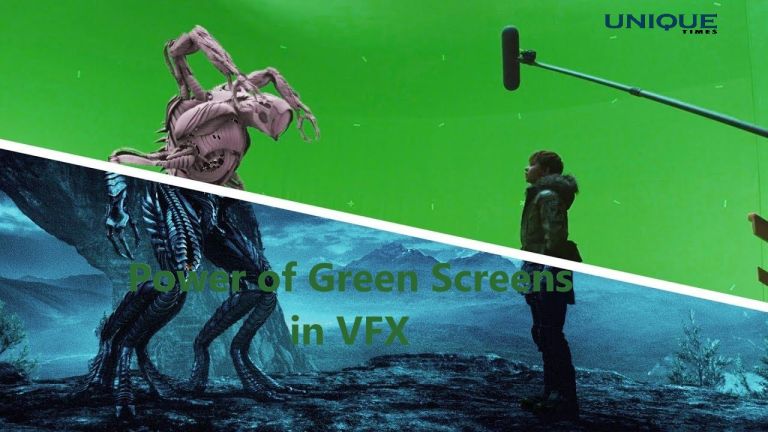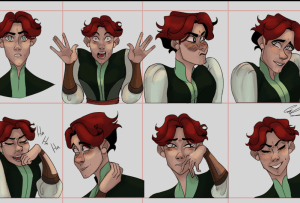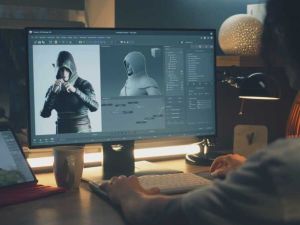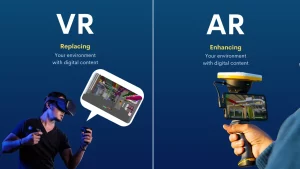In the captivating world of filmmaking, visual effects (VFX) have transformed from a behind-the-scenes secret to a cornerstone of modern cinema. VFX artists are the unsung heroes who blend artistry with cutting-edge technology to bring fantastical worlds and awe-inspiring action sequences to life.
This blog will navigate the exciting landscape of VFX technology, exploring its rich history, groundbreaking trends, and the future that lies ahead.
A Brief History of VFX
The roots of VFX stretch back to the very birth of cinema. Pioneering filmmakers like Georges Méliès and Segundo de Chomón relied on practical effects, stop-motion animation, and meticulously crafted miniatures to weave their cinematic magic. Imagine the wonder audiences felt witnessing a rocket crash into the moon’s eye in Méliès’ iconic “A Trip to the Moon” (1902) – a testament to the power of early special effects.
The mid-20th century ushered in the golden age of practical effects. Monster movies and science fiction films thrived, with Ray Harryhausen leading the charge.
His painstaking stop-motion work in films like “The 7th Voyage of Sinbad” (1958) brought mythical creatures to life in a way that continues to inspire today. Meanwhile, Stanley Kubrick’s “2001: A Space Odyssey” (1968) pushed the boundaries with meticulously designed miniature space sequences, while George Lucas’ original “Star Wars” trilogy (1977-1983) masterfully combined practical models with innovative camera techniques.
The Digital Revolution: A New Era of VFX
The true game-changer arrived in the 1980s with the dawn of digital technology. “Tron” (1982) introduced audiences to the dazzling world of computer-generated imagery (CGI), immersing them in a digital landscape for the first time.
However, it was Steven Spielberg’s “Jurassic Park” (1993) that marked a monumental leap forward. The film’s groundbreaking CGI dinosaurs stunned audiences and showcased the immense potential of digital effects. Suddenly, the creation of lifelike creatures and fantastical environments became a reality.
The Latest Trends Shaping the Future of VFX
VFX technology continues to evolve at a rapid pace, constantly pushing the boundaries of what’s possible. Let’s delve into some of the most exciting trends shaping the future of VFX:
Real-Time VFX: This revolutionary technology allows for instant viewing and manipulation of VFX elements. Real-time rendering streamlines the creative process, enabling faster iteration times, greater creative control, and seamless integration with live-action footage.
AI and Machine Learning: Artificial intelligence and machine learning are rapidly transforming the VFX workflow. These technologies automate repetitive tasks like rotoscoping (isolating foreground objects) and 3D model generation, freeing up VFX artists to focus on more creative endeavors. Expect AI to play an even greater role in creating hyper-realistic and nuanced effects in the years to come.
Virtual Production: Virtual production utilizes real-time VFX to create immersive virtual environments for live-action filming. This allows filmmakers to achieve complex scenes that would be impractical or even impossible to shoot in the real world. Virtual production opens up a world of creative possibilities for directors and storytellers.
Augmented Reality (AR): AR overlays digital elements onto the real world, offering exciting possibilities for the future of VFX. Imagine interactive experiences where viewers can engage with virtual characters or objects within a film. AR has the potential to revolutionize the way audiences experience movies.
The Impact of VFX
VFX are more than just eye-catching visuals. They serve as a powerful storytelling tool, heightening emotions, transporting audiences to fantastical worlds, and bringing impossible scenarios to life. The next time you witness a superhero soar through the sky or a mythical creature come to life on screen, take a moment to appreciate the artistry and innovation behind the magic – the ever-evolving world of VFX technology.
Considering a Career in VFX?
As VFX technology continues to evolve, so do the opportunities for careers in this field. From VFX artists to software developers and technical directors, the industry offers a range of roles for those passionate about blending creativity with technology.
The future of VFX looks promising with advancements in AI, machine learning, and real-time rendering paving the way for even more spectacular visual experiences. Virtual production and AR will further expand the horizons of what is possible, making the boundary between real and virtual worlds increasingly seamless.
FAQs
1. What kind of software do VFX artists use?
There are many software programs used in VFX, but some of the most popular include:
- Maya: Used for 3D animation, modeling, and character creation.
- Houdini: Powerful for simulations, particle effects, and destruction.
- Nuke: Industry-standard software for compositing, which is the process of combining various elements (live-action footage, CGI, etc.) into a final image.
- Adobe After Effects: Offers motion graphics capabilities and can be used for VFX compositing as well.
2. How is real-time VFX changing the filmmaking process?
Real-time rendering allows VFX artists to see their creations instantly, streamlining the workflow and enabling faster feedback and adjustments. This can be especially beneficial for complex scenes or those involving interaction between live-action elements and VFX.
3. What role does AI play in VFX?
Artificial intelligence and machine learning are automating repetitive tasks in VFX, freeing up artists to focus on more creative aspects. AI can be used for rotoscoping, 3D modeling, and even creating realistic facial expressions for characters.
4. Is a career in VFX right for me?
If you have a passion for movies, a creative mind, and an aptitude for technology, then VFX could be a great career choice. The field offers a variety of specializations, so you can find a role that aligns with your interests and skills. Be prepared for a challenging but rewarding career path that requires continuous learning as technology evolves.





